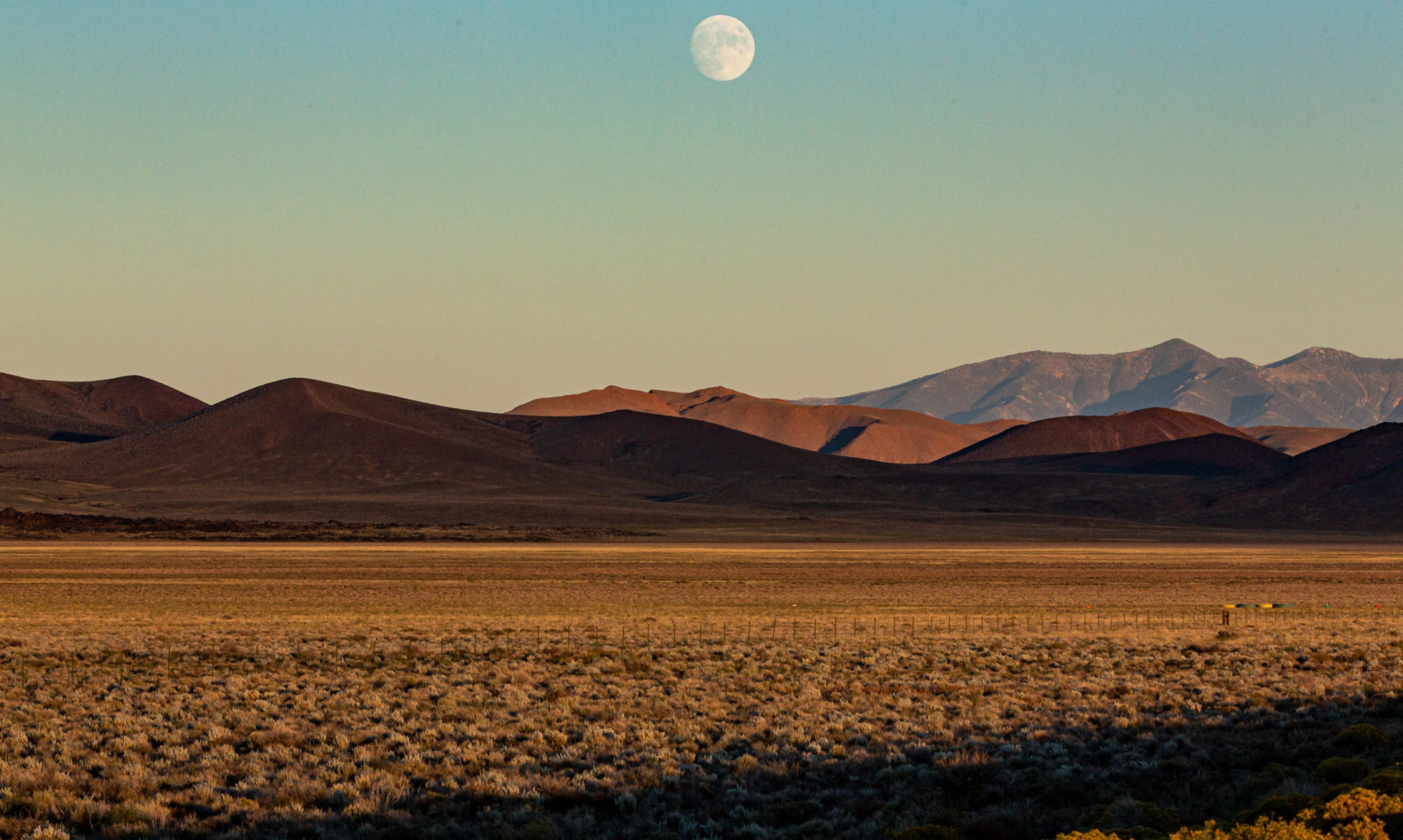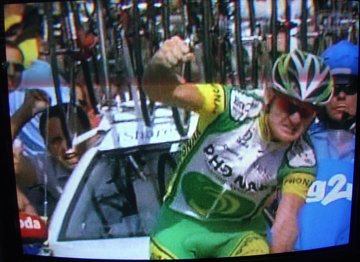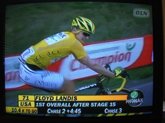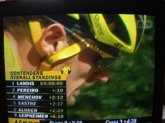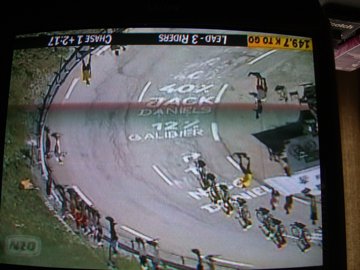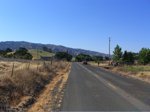It’s late, and we’re getting up early to fly to New York to visit Kate’s family (and see my brother John). So the telling of this tale might be a little truncated. But:
One of my cycling goals this year was to ride three double centuries — 200 miles in a day — because there’s a sort of prize for that feat called the California Triple Crown. I rode my three doubles in April and May — two very tough rides (the Devil Mountain Double and the Central Coast Double, both featuring lots and lots of steepish uphill riding) and one that the cognoscenti have come to sniff at as "easy" (the Davis Double Century, one of the oldest doubles anywhere). I don’t subscribe to the notion that riding 200 miles in a day, no matter what the course, is easy.
A couple weeks ago, I was kicking around riding plans with a friend, Bruce. He suggested doing a local double called Bay in a Day, first run last year. Its unique feature: It circles the whole of San Francisco Bay, which is a neat idea in itself; though it’s a challenge, too, because to keep the ride close to 200 miles and make it all the way around means spending a lot of time in heavily populated areas on heavily traveled roads. Despite the fact the ride’s not yet recognized for Triple Crown credit, Bruce and I signed up — though it developed after we’d paid our non-refundable fees that Bruce had a social engagement he couldn’t break and could only do half the ride.
Then the heat came. By last Friday, the Bay Area and most of California was in the same red zone as the East and Midwest had been earlier in the week. Friday night, the National Weather Service put out a Heat Advisory warning of triple-digit temperatures on Saturday. Among other things, the weather service and local TV weather forecasters warned against outdoor exercise on Saturday. I heard the warning and thought about calling Bruce and bailing on the ride. Then I thought about The Terrible Two, an epic double that starts up in Santa Rosa, in Sonoma County, and is famous for two things: the combination of brutal climbs (present every year) and brutal heat (present most years, including this one). I know plenty of people, including Bruce, who rode The Terrible Two a few weeks ago, or tried to, and I told myself if they could do it, I could, too.
Saturday morning: We rolled out of Novato, in Marin County, at 5:35 a.m. It was beautiful, clear, and too warm, even for a midsummer morning. The water in San Pablo Bay — the northeasternmost extension of San Francisco Bay — was glassy in the calm. We sped along for the first couple of hours and covered a lot of ground; it wasn’t until about 10 that it started to feel hot; within another hour, the air felt overheated and oppressive. Bruce left the route about 11:30 to catch BART back to Berkeley, and I and a couple of other riders I know kept on to Palo Alto, the lunch stop, at mile 108. By then, the temperature was close to 100 and the heat on the road was more like 105 to 110.
So far, I wasn’t feeling too taxed. I stopped for about 45 minutes at lunch and drank lots — several V8s and a couple of Cokes and plenty of water. I knew things were going to get worse. They did: Heading back into the hills east of the Stanford campus and away from the Bay was like going into an oven. I was carrying two one-liter water bottles and a Camelbak that carries another two liters; the water in the bottles quickly became hot and unpleasant to drink; the water from the Camelbak was better, though water in the tube coming out of the reservoir was also very warm. On downhill stretches, the wind was just a solid, unrefreshing blast of heat.
It was 25 miles from lunch to the next rest stop. Luckily, it never entered my mind to have a timetable for that stretch. Whenever the heat started to feel overwhelming, I stopped — at a store in Woodside, where it was 105 in the shade, at a parking lot alongside a big reservoir, once more at an impromptu water stop set up by the ride organizers. It probably took me a good two and a half hours to cover the 25 miles, but the heat wasn’t quite over. Riding up the Peninsula toward San Francisco, I started to plot where I’d quit. Finally, though, about 5:30 in the afternoon, I felt the first trace of a breeze off the Pacific. The temperature dropped into the low 90s, the high 80s, the mid 70s. I imagined I’d feel better if I could cool off, but I was surprised at how much better I felt. Crossing the Golden Gate Bridge, I recorded the low temperature for the day — 63. On the north end of the bridge, the temperature rose 25 degrees, but I was through the worst of it and managed to get back to Novato, the starting point, after 10 o’clock. It was a lot later than I figured on finishing, but I’d made it.
(I wrote a little report for the ride organizers, which I’ll post as a continuation if you’re curious).
Continue reading “Hell on Wheels”
Like this:
Like Loading...
